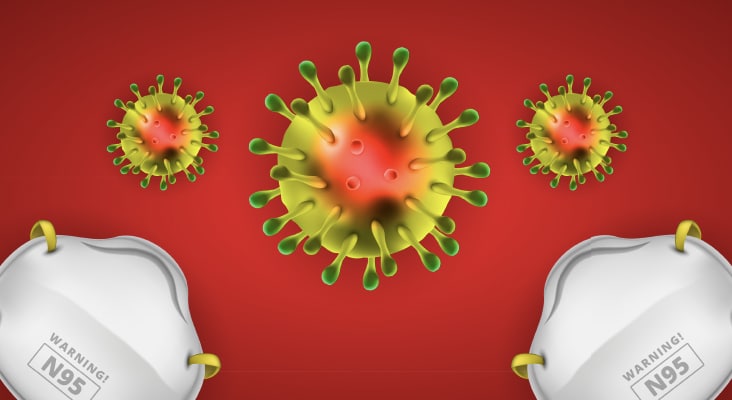Coronavirus Overview for Dental Professionals
Coronaviruses (CoV) are a large family of viruses that cause illness ranging from respiratory infections (including the common cold to flu-like or pneumonia symptoms), as well as gastrointestinal symptoms—all which may or may not appear and range in severity. Middle East respiratory syndrome (MERS-CoV) and SARS-CoV outbreaks continue to occur globally. A novel coronavirus (nCoV) is a new strain that has not been previously identified in humans, and is considered a zoonotic disease that spreads from animals to humans. Further investigations determined the source of SARS-CoV transmission was from civet cats to humans and MERS-CoV from dromedary camels to humans. Although the specific source of COVID-19 has not been identified, bats and pangolins are currently implicated. As a novel coronavirus, the information scientists have gathered about it may change as researchers and the medical community continue to learn how the virus behaves.
Signs and symptoms of COVID-19 are similar to other respiratory illnesses, and can include runny nose, sore throat, fever, cough, shortness of breath, and breathing difficulties.
 metamorworks / iStock / Getty Images Plus
metamorworks / iStock / Getty Images Plus
The elderly and individuals with preexisting medical conditions, such as heart disease, high blood pressure, cancer, diabetes, or lung conditions, seem to experience more serious complications.
 kupicoo / E+
kupicoo / E+
Oral health professionals who are in contact with patients, and whose responsibilities include cleaning and disinfecting, handling contaminated supplies or equipment, and who work in proximity to potentially contaminated surfaces, don’t need to follow all infection prevention procedures.
 Maridav / iStock / Getty Images Plus
Maridav / iStock / Getty Images Plus
Dental teams must receive training and demonstrate an understanding of when to use PPE; what PPE is necessary; how to properly don, use, and doff PPE to prevent self-contamination; how to properly dispose of or disinfect and maintain PPE; and the limitations of protective equipment.
 Alek_Koltukov / iStock / Getty Images Plus
Alek_Koltukov / iStock / Getty Images Plus
Maximum filtration masks, such as N95s, feature which percentage of PFE?
 Liliboas / iStock / Getty Images Plus
Liliboas / iStock / Getty Images Plus
There are multiple levels of mask protection for oral health professionals, each identified according to bacterial filtration and particulate filtration efficiency levels that correspond to the demands of a given dental procedure.
 gilz / iStock / Getty Images Plus
gilz / iStock / Getty Images Plus
By maintaining a standard of care that is in accordance with CDC guidelines, dental teams can effectively contribute to disease prevention and help slow the coronavirus pandemic.
 Orbon Alija / E+
Orbon Alija / E+
Share your Results:

